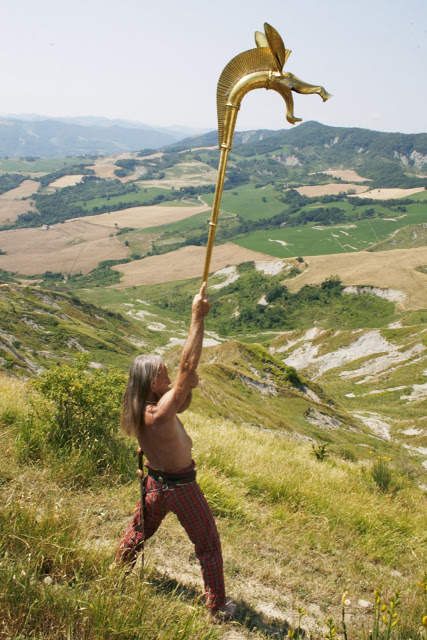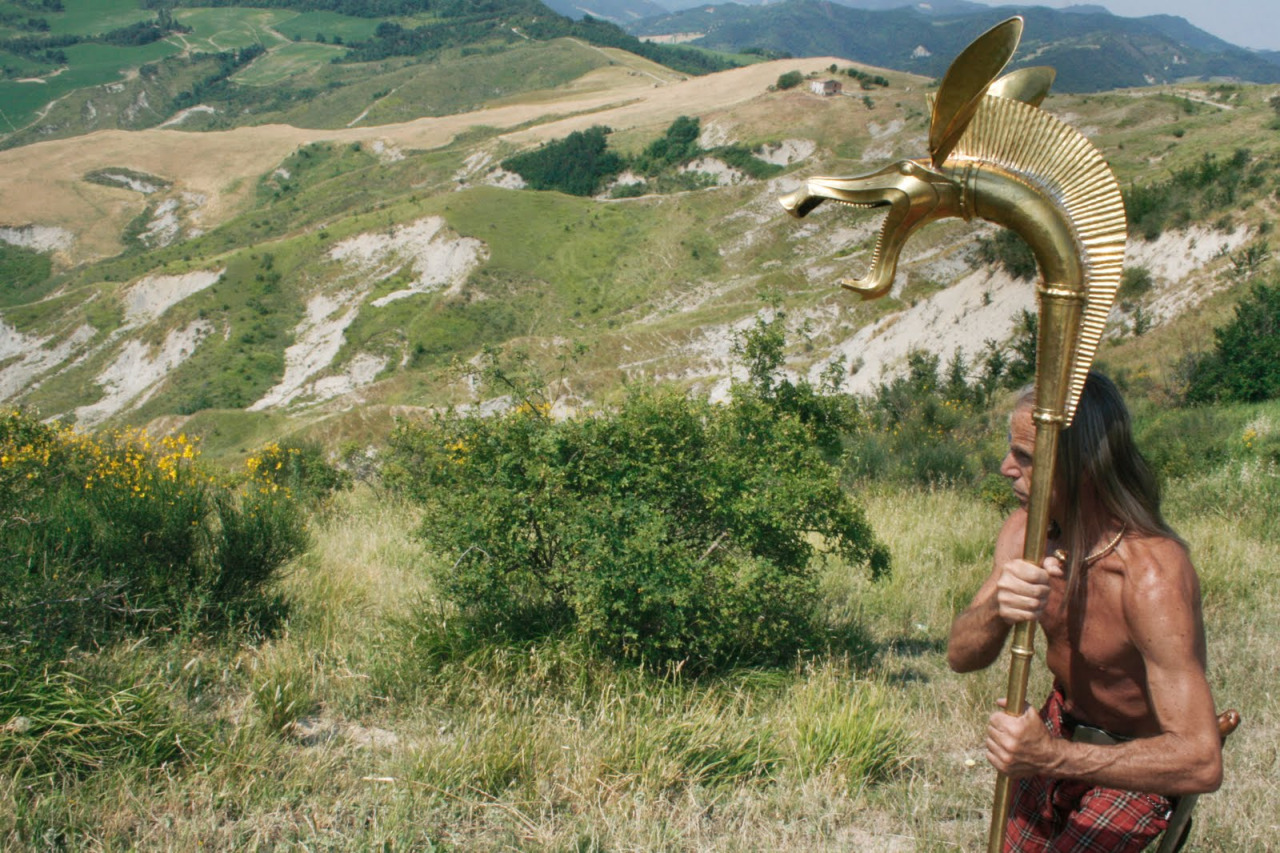

The Greek historian Polybius (206-126BC) was so impressed by the clamour of the Gallic army and the sound of their war horn, the carnyx, he observed ~ “There were countless trumpeters and horn blowers and since the whole army was shouting its war cries at the same time there was such a confused sound that the noise seemed to come not only from the trumpeters and the soldiers but also from the countryside which was joining in the echo”.
The carnyx, was the long, slender instrument used by the Celts in the last three centuries BC. The head, was typically stylized in the shape of a creature such as the boar. A joined section at the jaws also moved when trumpeted – striking further terror into the enemy. The Carnyx may also have been played at feasts, weddings, funerals and festivals.
When the remains of seven carnyx were unearthed, Christophe Maniquet, an archaeologist at INRAP, the National Institute for Preventive Archaeological Research (Institut National de Recherches Archéologiques Préventives), was curious to find out exactly what sound it produced as to have driven the Romans mad – or was used to call upon the dieties, such as the god Toutatis.
In 2004, more than 500 iron and bronze items placed as offerings to the gods were discovered a small 30cm-deep pit in Tintignac, in the Corrèze department. “These items were deliberately damaged so that they could not be used again by mere mortals,” said Maniquet.
Some 40 fragments were identified as being carnyx parts, making it possible to restore a tall, 1.8-metre-long instrument with a stylised boar head at the top – a first in archaeology. “Some carnyx pieces were discovered in England, Scotland, Germany and Italy, mainly in the 19th century, but the context was unclear and we have never found so many instruments in one go,” said Maniquet.
The Deskford Carnyx, the only surviving head-piece from Britain, was found at Deskford in Banffshire. It is thought to have also been buried as a ‘votive offering’ and was used between around AD 80 and 200. On display at the National Museum of Scotland in Edinburgh, it is made of brass and bronze.
Definitively, the carnyx would be considered a wind instrument, part of a sub-family of brass instruments defined by the presence of a mouthpiece. The sub-sub family would be natural brass instruments without valves. With its conical shape the carnyx resembles a soft brass instrument like the horn, with a more muffled sound than a cylindrical trumpet-like brass instrument.
Unfortunately since it was impossible to play the instruments the Gauls had so carefully dismantled, Maniquet asked an instrument maker to reproduce a brass carnyx of the same size. The archaeologist worked with experts from the acoustics laboratory at the Maine-CNRS University in Le Mans, headed by Joël Gilbert, a brass instruments specialist, who carried out an in-depth analysis of the specimen.
A study presented by a group of researchers and instrument makers in Le Mans, revealed that the resonance frequency determined the series of playable notes. In a well-designed instrument this resembles a harmonic series. If the musician had the base note he could produce others (mainly octaves, fifths and thirds), by modulating air flow and lip tension.
This analysis moved the team to conclude that the carnyx was not, as previously thought, a primitive and structurally limited instrument. They have discerned that further models and research will produce more accurate reproductions in the hopes that it may be finally learned what sound it was that so horrified the Romans and other enemies…
that’s one sexy method of overcompensating
Gonna add a link of the thing being played, just so you know why everyone crapped themselves upon hearing it.


